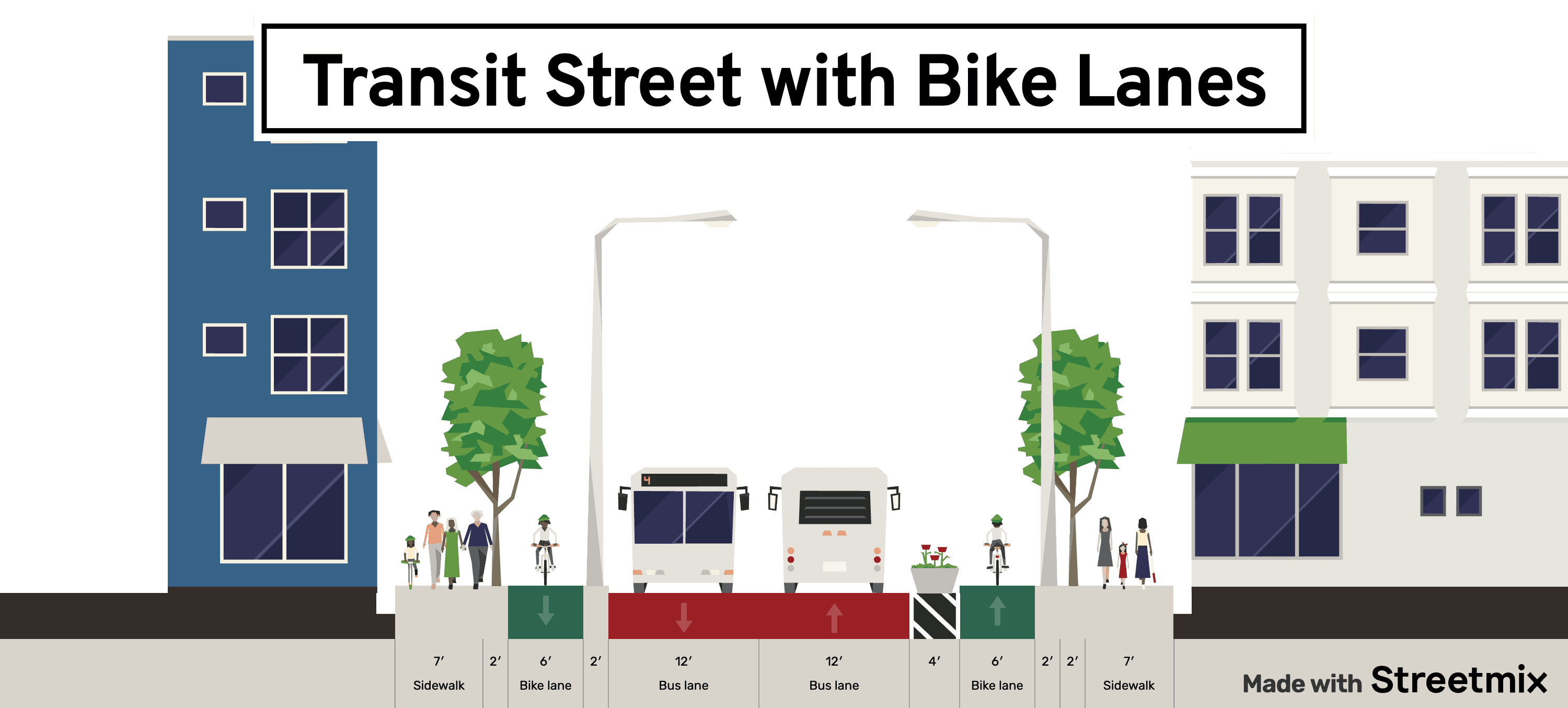Transit Street Design
Purpose of a Transit Street
The goal of a transit street is to prioritize transit, biking, and walking along key corridors in the city. This is done by designing the street to be safe, comfortable, and efficient for all users. Transit streets are designed to accommodate high volumes of transit riders, cyclists, and pedestrians, while also providing access to local businesses and residences. By prioritizing transit, biking, and walking, transit streets help reduce congestion, improve air quality, and promote sustainable modes of transportation.
Design Elements of a Transit Street
There are several key design elements that are common to transit streets. These include:
- Dedicated transit lanes: Transit streets often have dedicated lanes for buses and other transit vehicles. These lanes help ensure that transit vehicles can move quickly and efficiently through traffic, reducing travel times for passengers.
- Protected bike lanes: Transit streets also typically have protected bike lanes to provide a safe and comfortable environment for cyclists. These lanes are separated from traffic by physical barriers, such as curbs or bollards, to reduce the risk of collisions with motor vehicles.
- Wide sidewalks: Transit streets feature wide sidewalks to accommodate high volumes of pedestrians. Wide sidewalks provide space for pedestrians to walk comfortably and safely, as well as space for outdoor seating, landscaping, and other amenities.
- Transit stops: Transit streets are designed to accommodate transit stops, including shelters, benches, and real-time arrival information. These stops are located at key intervals along the street to provide convenient access to transit services.
- Traffic calming measures: Transit streets often incorporate traffic calming measures, such as raised crosswalks, speed humps, and curb extensions, to reduce vehicle speeds and improve safety for pedestrians and cyclists.
- Green infrastructure: Transit streets may also include green infrastructure elements, such as street trees, rain gardens, and bioswales, to manage stormwater runoff, improve air quality, and enhance the streetscape.
Example Configurations
Here is an example of a transit-priority street configuration that would allow for wide bike lanes, dedicated bus lanes, and ample space for pedestrians. This is a 65' wide street which appears to be fairly siiilar to the widths of 5th and William in downtown Ann Arbor, where this type of street is suggested on this site.

Transit street with wide bike lanes and room for wide sidewalks and other ameneties. Part of a suggested design for 5th and William in downtown Ann Arbor to allow high throughput of buses and bikes in downtown.
Here is an example of a transit street with the same configuration, except stops for the buses.

Transit street with stops for buses. Part of a suggested design for 5th and William in downtown Ann Arbor to allow high throughput of buses and bikes in downtown.